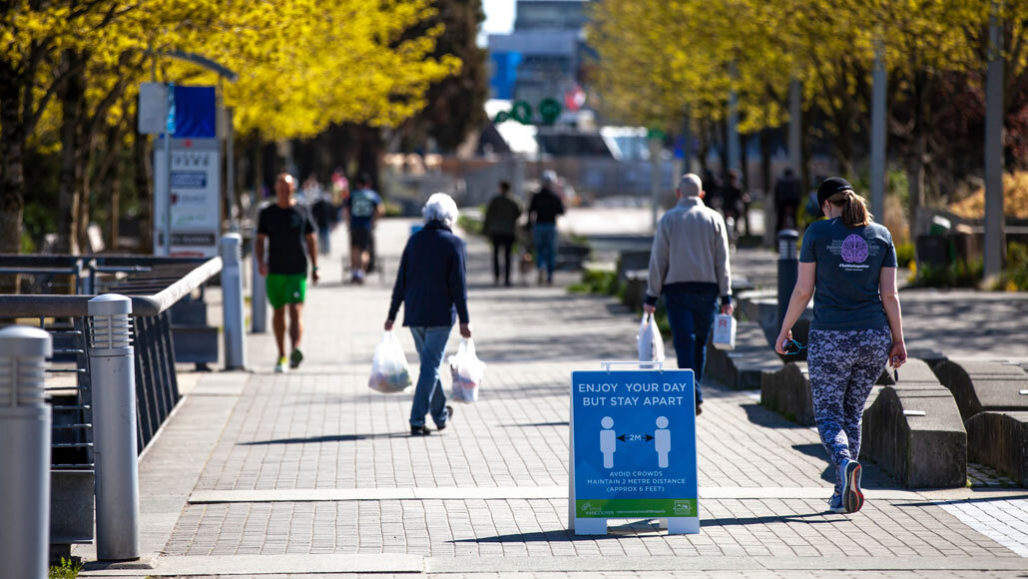Questions for ‘Six foot social-distancing will not always be enough for COVID-19’

A sign in a Vancouver park warns pedestrians to stay two meters (six feet) apart to avoid coronavirus infection. But that may not be far enough to be safe under all conditions.
GoToVan/Flickr (CC BY 2.0)